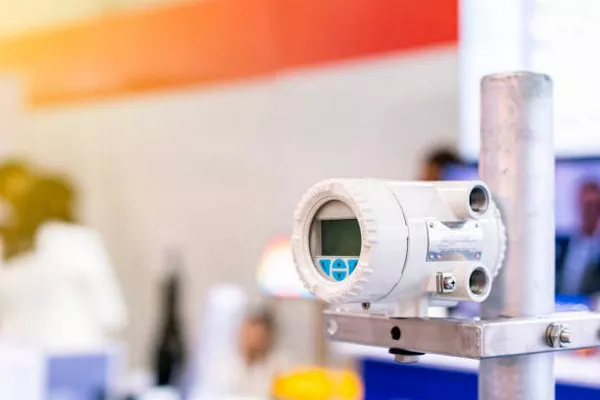Fluorescence spectrometry is a powerful analytical technique widely used in chemistry, biology, environmental science, and material science. It offers unparalleled sensitivity and specificity in detecting and quantifying molecular species. This article delves into the working principles of a fluorescence spectrometer, its key components, and its diverse applications.
Principles of Fluorescence
Fluorescence is a form of luminescence where a molecule absorbs light at a certain wavelength and emits light at a longer wavelength. This process involves several stages:
Excitation: A photon with energy corresponding to a specific wavelength is absorbed by a molecule, promoting an electron from the ground state to an excited state.
Internal Conversion and Vibrational Relaxation: The excited molecule undergoes non-radiative relaxation processes, where excess energy is dissipated as heat, bringing the molecule to the lowest vibrational level of the excited state.
Emission: The molecule returns to the ground state, emitting a photon with less energy (longer wavelength) than the absorbed photon.
Components of a Fluorescence Spectrometer
A fluorescence spectrometer is designed to precisely measure the fluorescence emitted by a sample. Its main components include:
Light Source: Provides the excitation energy. Common sources are xenon or mercury arc lamps, and more recently, LEDs and lasers. The choice of light source depends on the required wavelength range and intensity.
Excitation Monochromator: Selects the specific wavelength of light from the source to excite the sample. This is typically a grating monochromator or a filter system that ensures only the desired wavelength reaches the sample.
Sample Holder: Where the sample is placed. It must be transparent to both the excitation and emission wavelengths. Common configurations include cuvettes, well plates, or flow cells.
Emission Monochromator: After the sample emits fluorescence, the emitted light is passed through another monochromator or filter system to isolate the specific emission wavelengths of interest.
Detector: Measures the intensity of the emitted light. Photomultiplier tubes (PMTs) are often used due to their high sensitivity, although photodiodes and charge-coupled devices (CCDs) are also common in modern instruments.
Data Acquisition System: Collects and processes the signal from the detector, displaying the fluorescence intensity as a function of wavelength, time, or another parameter.
Working of a Fluorescence Spectrometer
The operational sequence of a fluorescence spectrometer can be broken down into the following steps:
Excitation Light Selection: The excitation monochromator or filter selects a specific wavelength from the light source.
Sample Excitation: The selected excitation light irradiates the sample. Molecules in the sample absorb the light and become excited.
Fluorescence Emission: Excited molecules emit light as they return to the ground state. The emission occurs at a longer wavelength than the excitation light.
Emission Light Collection: The emitted light is collected and passed through the emission monochromator or filter to select the specific wavelength(s) of interest.
Detection and Measurement: The selected emission light is detected by the detector, converting the light signal into an electrical signal.
Data Processing: The electrical signal is processed by the data acquisition system to produce a fluorescence spectrum or intensity data, which can be analyzed to determine various properties of the sample.
Types of Fluorescence Spectroscopy
Steady-State Fluorescence: Measures the intensity of fluorescence at a specific wavelength over time. It provides information about the concentration of fluorescent species and their environment.
Time-Resolved Fluorescence: Measures the fluorescence decay over time after a brief excitation pulse. This method gives insights into the lifetimes of excited states, which can be related to the dynamics and interactions of molecules.
Fluorescence Anisotropy: Measures the polarization of fluorescence. It provides information about the rotational mobility of molecules, useful in studying protein folding, binding, and other dynamic processes.
Applications of Fluorescence Spectrometry
Biological and Medical Research: Used extensively in the study of biomolecules such as proteins, nucleic acids, and lipids. It helps in understanding molecular interactions, enzyme activities, and cellular processes.
Environmental Monitoring: Detects and quantifies pollutants such as polycyclic aromatic hydrocarbons (PAHs), heavy metals, and pesticides in water, soil, and air samples.
Material Science: Investigates the properties of materials like semiconductors, nanomaterials, and polymers. Fluorescence spectrometry can probe electronic properties and surface characteristics.
Clinical Diagnostics: Used in various diagnostic tests, including fluorescence in situ hybridization (FISH) and immunoassays, to detect specific DNA sequences, proteins, and other biomarkers.
Pharmaceutical Industry: Plays a crucial role in drug discovery and development, including the screening of drug candidates and studying drug-receptor interactions.
Advantages and Limitations
Advantages:
High Sensitivity: Capable of detecting very low concentrations of analytes, down to the single-molecule level.
Specificity: Can distinguish between different molecular species based on their unique fluorescence characteristics.
Non-Destructive: Does not alter or destroy the sample, allowing for repeated measurements.
Limitations:
Quenching: The presence of certain substances can decrease fluorescence intensity, complicating quantitative measurements.
Photobleaching: Prolonged exposure to excitation light can degrade fluorescent molecules, reducing signal over time.
Interference: Background fluorescence from other components in the sample can affect the accuracy of measurements.
Future Trends
The field of fluorescence spectrometry continues to evolve with advancements in technology and methodology. Key trends include:
Miniaturization: Development of portable and handheld spectrometers for field applications.
Enhanced Sensitivity and Resolution: Use of advanced detectors and optical components to improve detection limits and spectral resolution.
Multiplexing: Ability to simultaneously detect multiple analytes in complex samples using sophisticated data analysis algorithms.
Integration with Other Techniques: Combining fluorescence spectrometry with other analytical techniques such as mass spectrometry or chromatography for comprehensive analysis.
Conclusion
Fluorescence spectrometry is a versatile and indispensable tool in scientific research and various industries. Its ability to provide detailed insights into molecular structures and interactions makes it invaluable for advancing our understanding of complex systems. As technology progresses, fluorescence spectrometry will continue to expand its applications, offering even greater capabilities and insights into the molecular world.

